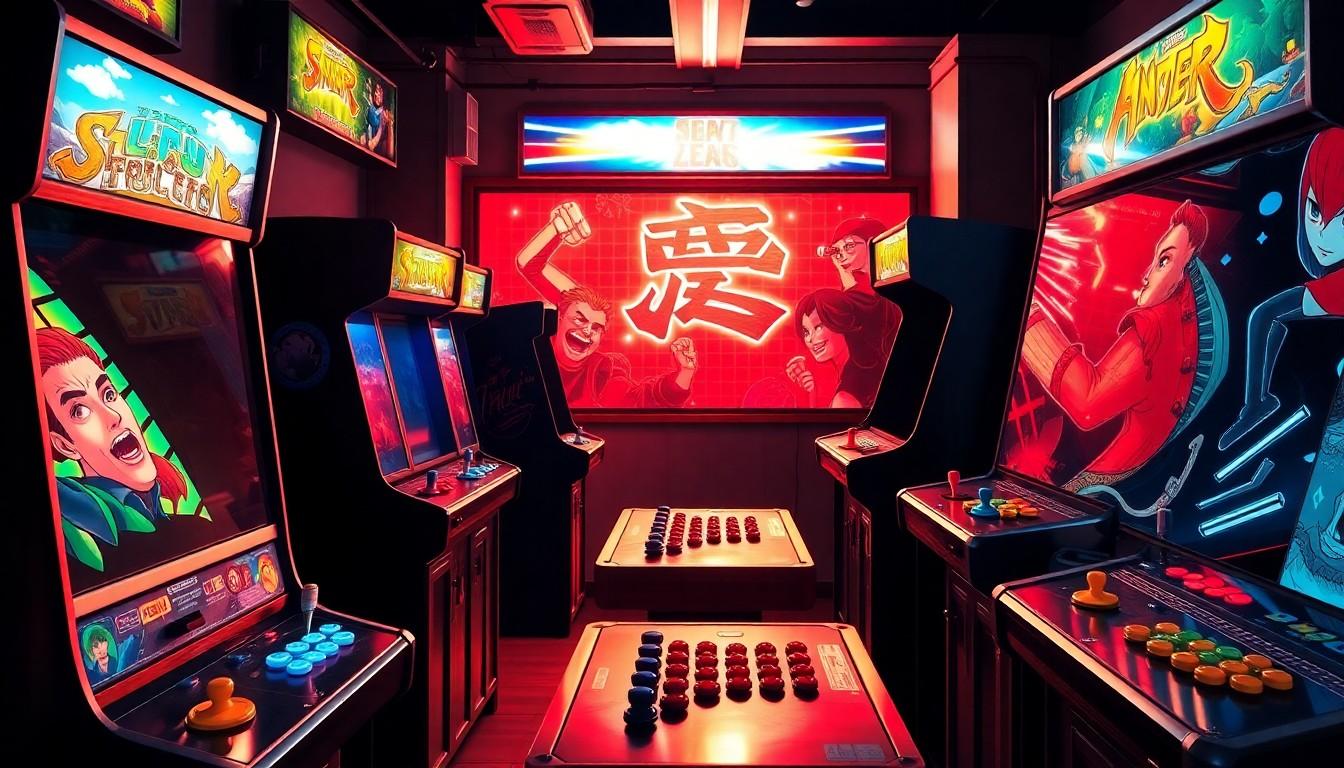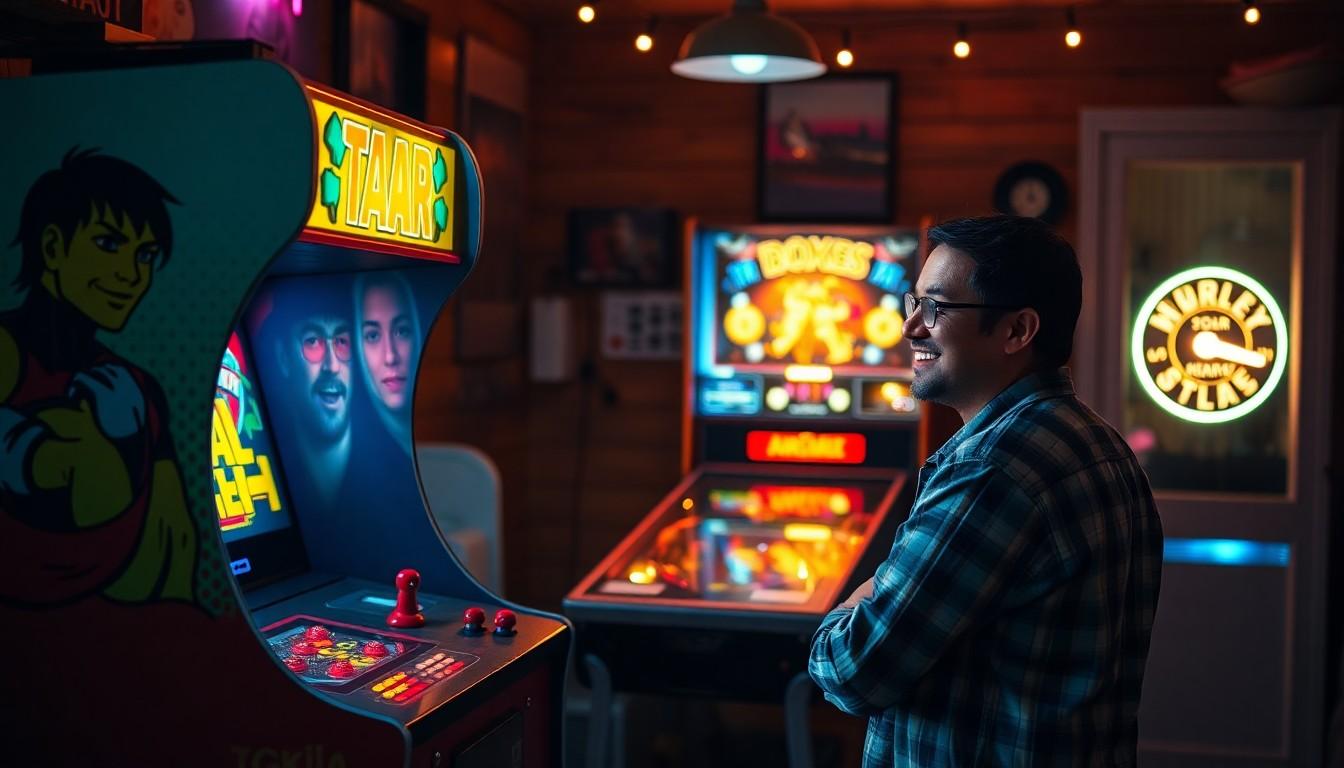Imagine stepping into a room filled with the nostalgic beeps and boops of classic arcade games. The vibrant colors and flashing lights beckon players to relive the golden age of gaming. Setting up your own arcade game paradise isn’t just a dream; it’s a ticket to endless fun and competition right in your living room.
Arcade Game Setup
Setting up an arcade game environment involves several key components. First, select a suitable space for the arcade. A garage, basement, or dedicated room provides enough room for equipment and player movement.
Next, choose the right arcade machines. Popular options include classic cabinets, multi-game consoles, and pinball machines. Each machine adds a unique flavor to the gaming experience, engaging players differently.
After selecting machines, consider the necessary equipment. A stable power supply is vital, along with surge protectors to safeguard electronics. Additionally, furniture such as stools or benches enhances comfort during play sessions.
Lighting plays an essential role in crafting an authentic arcade feel. Use neon or LED lights to create a vibrant atmosphere. Lighting not only makes the space visually appealing but also highlights the gaming machines.
Sound systems significantly contribute to the arcade experience. High-quality speakers ensure immersive sound from games. Speakers should deliver crisp audio that captures game soundtracks and effects.
Incorporating decorative elements enhances the arcade vibe. Posters, themed decor, and memorabilia from classic games elevate the environment. Such additions foster nostalgia and excitement among players.
Organizing an arcade tournament adds a competitive edge. Scheduling events encourages friendly rivalries and communal gaming experiences. Providing prizes or bragging rights can motivate players to join.
Maintaining the machines is crucial for long-term enjoyment. Regular cleaning, software updates, and repairs keep equipment functional. Proper maintenance minimizes downtime, ensuring an uninterrupted gaming experience.
With these components in place, creating a personal arcade transforms a space into a hub of fun. Engaging gameplay, interactive decor, and a lively atmosphere cultivate lasting memories for family and friends.
Essential Components of an Arcade Game Setup

Creating an engaging arcade game setup requires attention to several key components. Players will enjoy a more authentic experience with thoughtful choices.
Choosing the Right Arcade Cabinet
Select cabinets that align with personal preferences and available space. Classic arcade cabinets offer nostalgia, while multi-game cabinets provide versatility. Consider smaller tabletop versions for constrained areas. Size, weight, and style matter when ensuring a comfortable setup. Price varies significantly based on features and brand, impacting budget considerations. Research user reviews to glean insights about performance and durability. Investing in arcade original cabinets enhances aesthetic appeal, making the space visually inviting.
Selecting Arcade Game Hardware
Identify the crucial components for an optimal gaming experience, such as control panels, joysticks, and buttons. High-quality controllers improve responsiveness and increase enjoyment. Match hardware with desired game styles to ensure compatibility and performance. It’s beneficial to evaluate hardware brands based on reliability and user satisfaction. Explore options for custom setups that can showcase unique tastes. Connectivity options, including USB and Bluetooth, add versatility for game integration. Prioritize solid build quality to withstand intense gaming sessions over time.
Software and Game Selection
Choosing the right software and games enhances the arcade experience. Players often weigh the benefits of emulators against original games.
Emulators vs. Original Games
Emulators replicate classic gameplay, enabling access to a variety of titles without the need for original hardware. Players enjoy the flexibility emulation offers, as it supports multiple games on one device. Original games, however, provide authenticity and a tactile experience that’s hard to replicate. Nostalgia plays a significant role in this choice, as many prefer the feel of original cabinets. Compatibility can also impact decisions, as some games may not run optimally on emulators. Opting for original software protects the integrity of the game experience while potentially increasing value over time.
Popular Games for Arcade Setups
Several popular games stand out for arcade setups, each bringing a unique flavor. Classics like “Pac-Man” and “Donkey Kong” remain favorites due to their simple yet addictive gameplay. Fighting games such as “Street Fighter” and “Mortal Kombat” foster competitive play and social interaction. Puzzle games, including “Tetris”, add a strategic element that appeals to a broad audience. Multi-game systems provide versatility, allowing players to switch between numerous titles effortlessly. New releases also enter the arcade scene, blending nostalgia with modern graphics. Familiarity with these popular choices ensures an engaging environment for all players.
Setting Up Your Arcade Game Space
Creating the perfect arcade game space involves thoughtful planning and design. Consider the components that enhance both function and enjoyment.
Designing the Layout
Designing a functional layout maximizes space and promotes engagement. Allocate distinct zones for different types of games, like classic cabinets, modern consoles, and pinball machines. Arrange machines to allow easy movement, preventing crowded pathways. Code a unique style with thematic elements like neon lights for atmosphere and ease of navigation. Prioritize a central gathering area to encourage social interaction among players. Use wall space creatively for storage or display of memorabilia, enhancing both aesthetics and accessibility.
Optimizing for Comfort and Accessibility
Optimizing comfort and accessibility ensures an inviting environment. Choose seating that provides support and relaxation, accommodating players during long sessions. Position machines at ideal heights for various player sizes, guaranteeing an enjoyable experience. Install adequate lighting to reduce eye strain, enhancing visibility across the space. Maintain a clutter-free environment to improve movement and access to equipment. Ensure power outlets are accessible to prevent tripping hazards. Regularly assess player feedback to address comfort and accessibility concerns, keeping the arcade inviting for everyone.
Maintenance and Troubleshooting
Regular maintenance ensures optimal performance of arcade machines. Cleaning surfaces removes dust and debris, preventing mechanical issues. Dust accumulation can lead to overheating, so considering air circulation is essential.
Checking connections provides stability during gameplay. Inspecting cables and plugs for wear maintains a reliable power supply. Loose connections often cause frustrating interruptions, affecting player experience.
Updating software regularly enhances functionality. Many arcade systems receive firmware updates for improved performance and security. Keeping software current protects against glitches and enhances gaming experiences.
Diagnosing common issues can prevent downtime. For example, unresponsive controls may indicate problems with wiring or connectivity. Identifying the source of the issue facilitates quick repairs or replacements.
Replacing worn-out components is necessary for longevity. Arcade buttons and joysticks wear down over time, impacting gameplay. Stocking spare parts allows for immediate fixes without extended downtime.
Keeping an eye on sound quality enhances immersion. Distorted audio can detract from the gaming experience. Adjusting volume settings and checking speaker connections improves sound clarity.
Monitoring the physical condition of machines contributes to their lifespan. Visible signs of wear indicate the need for repair. Regular inspections help maintain appearances, ensuring machines look inviting.
Engaging with user communities offers troubleshooting support. Online forums often contain solutions for specific issues encountered by various arcade setups. Sharing experiences strengthens community knowledge and aids in problem-solving.
Documenting maintenance activities establishes a systematic approach. Recording repairs and upgrades creates a maintenance history for each machine. Keeping track of these actions supports effective long-term management.
Creating a personal arcade game setup is about more than just nostalgia; it’s about crafting a space that brings joy and excitement to both players and spectators. By carefully selecting the right machines and designing an inviting environment, anyone can transform their home into an arcade paradise.
With thoughtful planning and regular maintenance, the arcade can become a cherished gathering place for friends and family. The thrill of competition and the joy of shared experiences will ensure that this setup remains a source of entertainment for years to come. Embrace the adventure and let the games begin.

